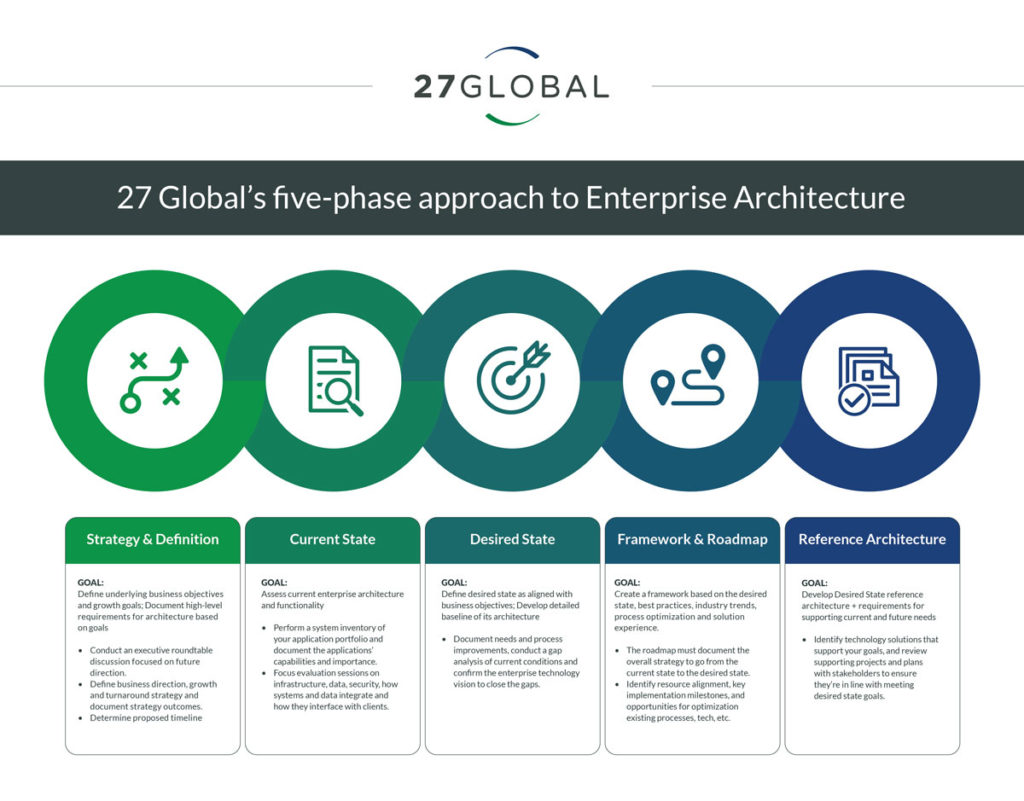Many firms have EA efforts that became too theoretical and don’t have the intended impact envisioned when the firm began the effort. This blog is intended to help our readers understand why you should have EA as a discipline within your firm and how to do it in a pragmatic manner to drive transformational results.

Why Enterprise Architecture?
Technology groups need to be able to execute strategic projects that fundamentally alter the way the company operates and does business. A 2019-2021 study from Accenture on enterprise technology strategies and their impact on company performance showed that leaders in tech adoption and innovation were growing revenues at 5x the speed of tech laggards. We believe strategy and execution of that strategy is key to drive transformation.
The key word is transformation. We are positioned to help CEOs, COOs, CIOs and CTOs become the chief transformation leader. Enterprise Architecture (EA) is a transition to managing strategy and transformation as an anticipatory discipline. Transformation execution primarily stems from strategy, innovation, and facilitation.
EA can be the catalyst to bring together the current and future needs of the organization and develop a solid plan to make them a reality. This brings about meaningful change. Without the right approach, companies pursuing digital transformation risk failure. Failure can range from increased tech costs to a company’s inability to grow and reach its potential.
EA can avoid these pitfalls by balancing actionable projects with dynamic, long-term strategy and a practical approach. This new practical approach can help:
- Accelerate decision-making and delivery of business outcomes
- Organize and optimize infrastructure to align with business goals
- Modernize and grow your IT department
- Foster collaboration and alignment between business and IT leadership to generate tech-enabled innovations and operating models
We believe there are four key items that are hindrances to transformation:
- Execution Skills Missing – Modern efforts require modern skills. Cloud, virtualization, automation, services, containers, APIs, machine learning and AI all require continuous learning, so lack of skills will prevent change
- Organizational Inertia – Organizational culture can impede shifts in behavior. Resistance to change and optimization can stop all transformational efforts
- Lack of Strategy and Strategy Blindness – Without aligning your coherent technology strategy, business strategy and go-to-market priorities, you risk failure in value creation.
- Inadequate Planning – Without a plan of how to get where you want to be, you’re likely to fail. This is not about proper project methodology, it’s about proper preparation for pragmatic strategy execution.





